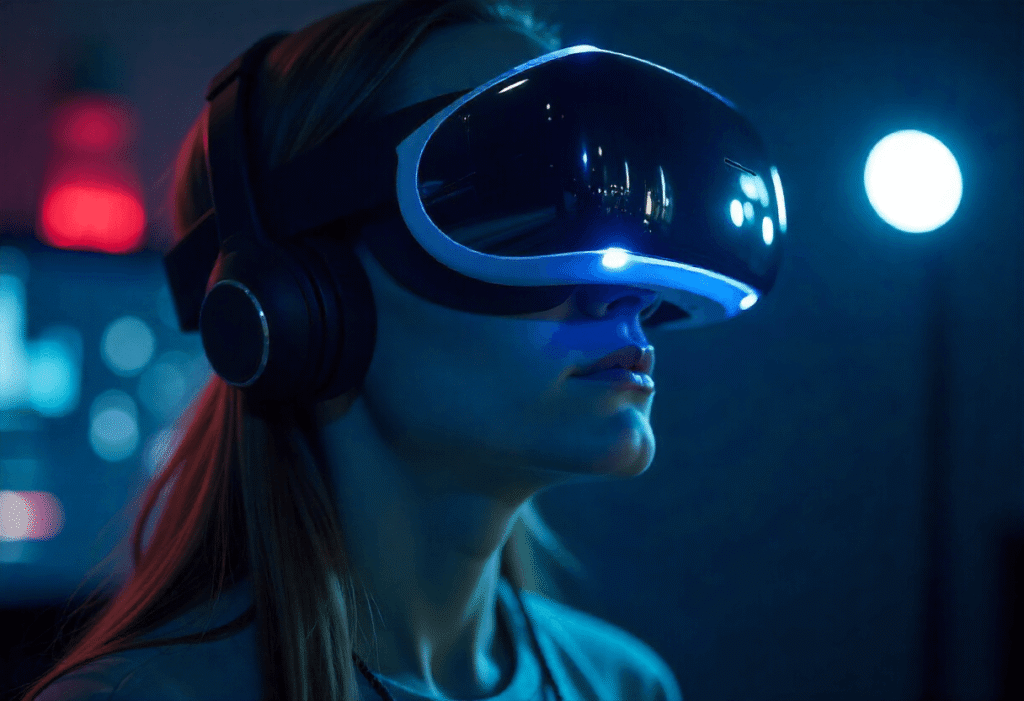Micro OLED displays are one of the most exciting technologies in 2025. They are small, high-resolution screens that can fit into compact devices, making them perfect for AR (Augmented Reality) and VR (Virtual Reality) headsets.
In this article, we will explore how micro OLED displays are changing AR and VR devices. You will learn about their benefits, latest applications, trends in 2025, and what the future holds for this technology. By the end, you will understand why micro OLED displays are becoming the top choice for immersive experiences.
What Are Micro OLED Displays?
Micro OLED displays are tiny screens that use organic light-emitting diodes, representing the latest micro OLED technology. Unlike regular OLEDs, these compact OLED screens are much smaller but provide high-resolution OLED panels with better image quality. They are energy-efficient and can produce bright, vivid colors even in small sizes, making them ideal for AR and VR display technology and wearable devices.
Compared to standard OLED or micro LED, micro OLED displays are lighter and thinner, making them ideal for wearable devices. They offer clear visuals without taking up much space, which is essential for AR glasses and VR headsets.
Why Micro OLED is Ideal for AR and VR Devices
AR and VR devices need displays that are compact, high-resolution, and fast. Micro OLED displays meet all these requirements. They deliver smooth visuals with high refresh rates, reducing motion blur in VR games and simulations.
The small size allows AR glasses to stay lightweight and comfortable. Micro OLED displays also consume less power, which helps extend battery life in wearable devices. These features make the user experience more immersive and realistic.
2025 Trends in Micro OLED AR/VR Devices

In 2025, many companies are adopting micro OLED displays and miniature OLED displays in their AR and VR devices. New headsets are now lighter, sharper, and more energy-efficient OLED displays than ever before.
Some trends include:
- Higher pixel density for crisper visuals on high-resolution OLED panels.
- Compact designs for lightweight AR glasses and other wearable devices.
- Improved color accuracy and brightness for better immersive display technology.
- Wider adoption in both gaming AR/VR headsets and industrial applications.
These trends show that micro OLED technology is not just a technical upgrade, it is reshaping the way AR and VR devices are built and used, making next-gen AR and VR displays more practical and efficient.
Real-World Applications in AR and VR
Micro OLED displays are being used in multiple AR and VR applications in 2025:
- Gaming and Entertainment: Headsets with micro OLED displays provide better visuals and smoother gameplay.
- Industrial AR: Workers can use AR glasses for training, simulations, and real-time guidance.
- Medical Applications: Doctors use AR devices with micro OLED displays for surgery planning and patient monitoring.
- Education: Students can learn in interactive, immersive environments.
These applications prove that micro OLED displays are making AR and VR devices more practical and efficient.
Challenges and Limitations in 2025

Despite their benefits, micro OLED displays have some limitations:
- High production costs: Making micro OLED screens is still expensive.
- Limited availability: Not all devices use micro OLED yet.
- Technical issues: Problems like heat and screen burn-in can occur with long usage.
However, companies are improving manufacturing processes, which will make micro OLED displays more common in the coming years.
The Future of Micro OLED in AR/VR
Micro OLED displays are expected to dominate AR and VR technology in the future. Experts predict wider adoption in gaming, industry, and healthcare.
In addition, new innovations may combine micro OLED with AI and other advanced technologies to make devices smarter, faster, and more efficient. The compact size and high performance of micro OLED will likely make it the preferred choice for immersive devices in the next decade.
Conclusion
Micro OLED displays are truly transforming AR and VR devices in 2025. They provide high resolution, energy efficiency, and compact design, making headsets and AR glasses more immersive and practical.
As new devices continue to adopt this technology, micro OLED will play a key role in shaping the future of AR and VR. Staying updated with trends and innovations will help users and developers take full advantage of this revolutionary technology.

